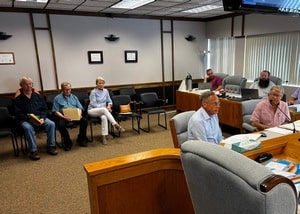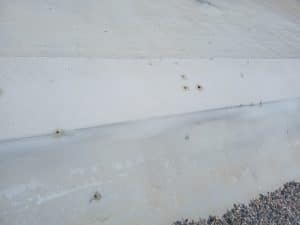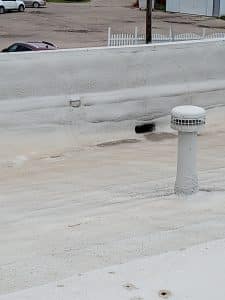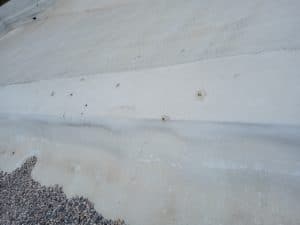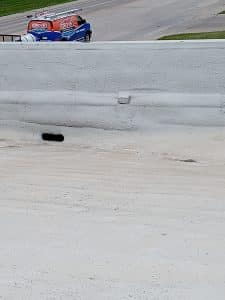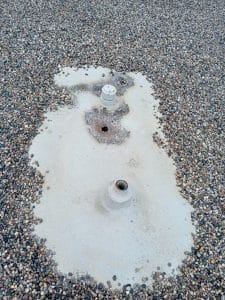Polk County Historical Society members were at this week’s Polk County board meeting in search of funds to repair the Polk County Museum’s building and roof. Following the Polk County board meeting, the Historical Society staff invited the commission members to a tour of the museum to see the condition firsthand.
Over the past three years, the Historical Society has experienced water damage from water leaking through the roof. The staff is currently looking for an expert to find the estimated cost of the damage. “We would like for someone to come down and identify what the problems are,” said Vice President of the Polk County Historical Society Francis Laplante. “We have the flat part on the main part of the building that has the foam insulation with a hard top on that, and p rock with helps brace some of the impacts from hail damage.”
Other areas of the roof do not have rock placed on them due to the steepness of the structure, and the hardcover has been penetrated by hail and other natural causes. Staff members have attempted to patch holes in recent years, but the damage cannot be repaired with those simple patch-ups.
In the front of the museum, the lobby area, the holes on the roof are visible from the inside. “You can see from the inside a couple of holes in the roof, in the ceiling area where we have a water leakage,” said Laplante. “We haven’t patched those up mostly, so we can have an expert come and take a look and identify what the holes are, what’s causing them, and hopefully, they can find a solution for it.” Historical Society is now looking for a contractor to estimate the project’s total cost; they will then present that cost to the Polk County board commissioners.
The staff believes a potential problem can be from a freeze/thaw cycle from changing seasons, which creates a volume of water and condensation. This could lead to the outlets on the roof allowing water to pass through into the conduit.
The Historical Society would also like the roof above the back entrance replaced because of the insulation problems during the winter months. “We would like that to get replaced with an enclosure and also a double entrance like the museum’s front entrance,” said Laplante. “That would be a long-term solution for the water that we have running in through the back.”
It is reported that the structure of the building is excellent yet and has a long life ahead of it if it is preserved correctly. “The main structure of this building of what was the old Glen Denning Depot is solid,” said Laplante. “The beams are huge, and this building can outlast us by a long time if we preserve it. And that is what we are attempting to do now.
Images of damages are below.


